Ecommerce Email Marketing: Best Practices & Key Campaigns to Boost Sales
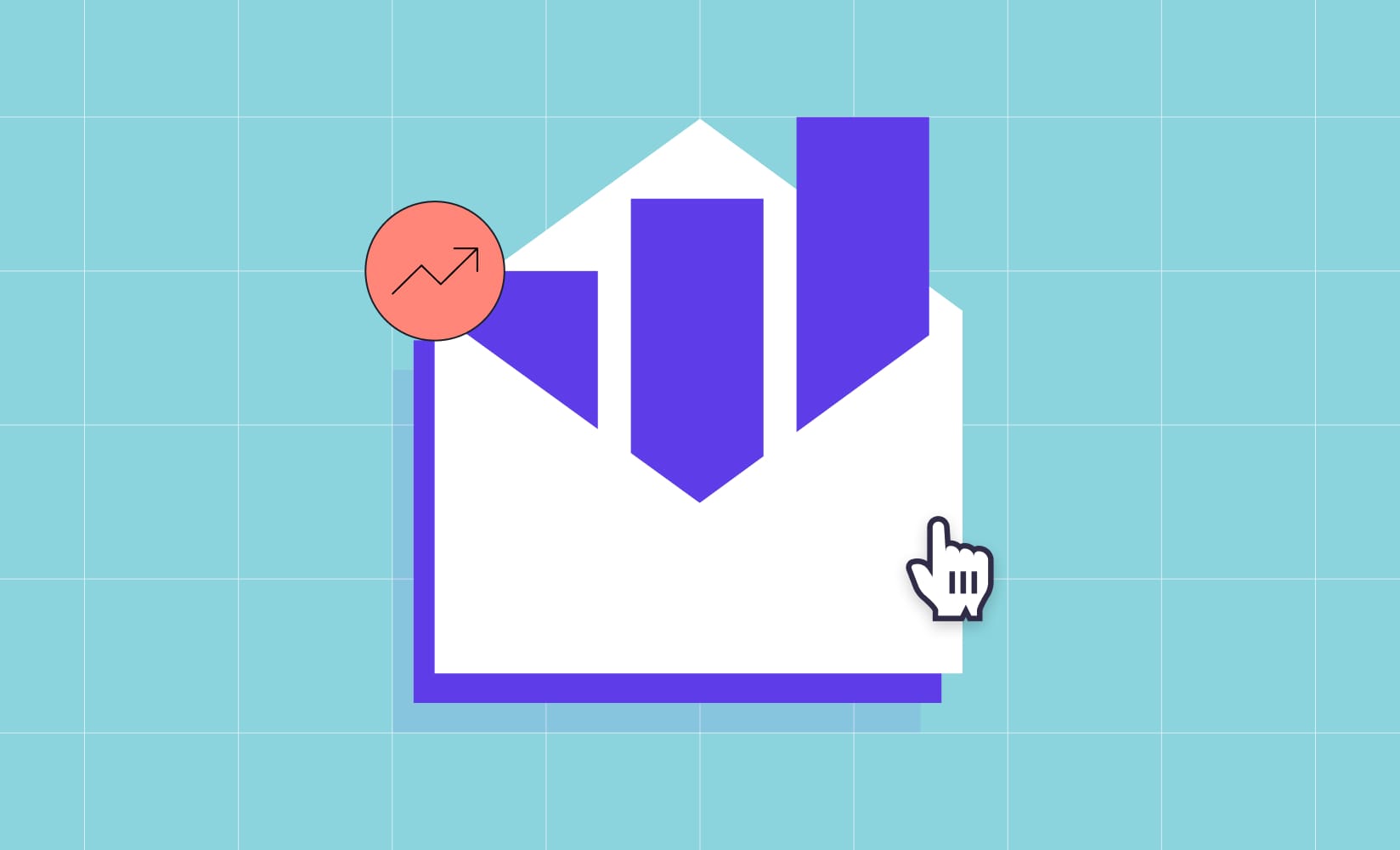
When talking about ecommerce strategy, you can’t leave digital marketing out of the equation. It’s vital for getting your brand in front of the right people.
Especially now, when COVID is still alive and well and pushing brick-and-mortar stores online everywhere.
You start seeing results like this:

Online purchases are on the rise, making many marketers invest in tactics like paid ads or partnering with influencers and investing in influencer marketing to increase sales in their Shopify store.
But sometimes, marketers don’t even think of their most cost-effective tactic: email marketing.
In this post, we’ll cover:
- What email marketing is all about
- Email marketing tactics to increase conversions
- The top ecommerce emails to focus on
#cta-visual-pb#<cta-title>Send email traffic to the right page<cta-title>Don’t let your email marketing efforts go to waste—drive leads to a perfect-fit landing page built for conversion.Get Page Builder today
Email marketing for ecommerce brands can be as easy as an email newsletter or as complex as a sequence of email marketing campaigns.
In simple terms, it can boost your ROI and help you build your brand in a way not many marketing mediums can.
As you can see from the chart below, the ROI is truly incredible.
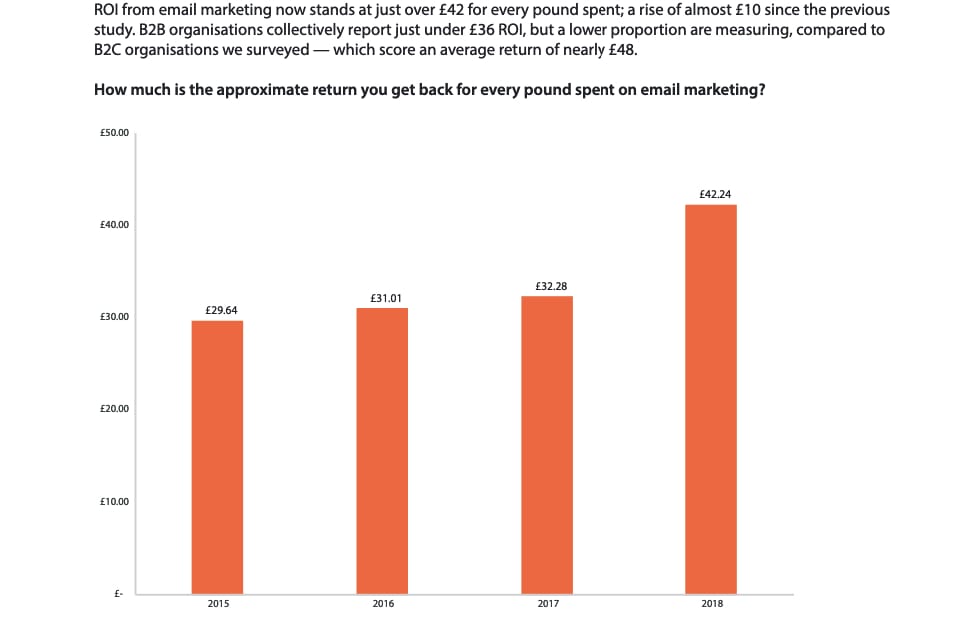
This is not something many marketing strategies can replicate. And unlike social media marketing, email marketing’s effects are easily and minutely traceable.
Of course, this is only possible when email marketing is done correctly.
In other words, when it’s meant to nurture, educate, and guide users through the funnel without being obnoxious.
A user’s inbox is like their home address.
And much like door-to-door sales, email blasts and non-personalized email marketing campaigns won’t perform well in 2022, especially when it comes to ecommerce marketing.
After all, personalized email marketing campaigns are not just a fad in 2022—they’re a necessity.
No matter how popular social media marketing campaigns are, email marketing can be as personalized and personal as you want.
So much so that each email will elicit a different emotional response, depending on the recipient.
Social media campaigns address your audience as a whole; email marketing, coupled with a great email marketing and marketing automation platform, allows you to address each user individually.
Creating your first ecommerce email marketing campaign in 2022 is a tricky job, despite the variety of tools and tactics out there.
Let’s take a look at the best practices that will boost your conversion rate and ROI.
Generate valuable leads
Using lead-gen tools is one of the most important first steps to help build your email list from scratch and send your marketing messages to interested shoppers.
Landing pages are key for capturing leads, equipped with targeted messaging and frictionless subscription forms.
A landing page is a standalone page created for a specific purpose, which is linked to from social posts and paid ads.
Its primary function is to grab attention by using interactive and intriguing elements such as countdown timers, quizzes, or videos and converting visitors to subscribers.
A high-converting landing page will have the following elements:
- Copy that resonates with the visitor
- Visuals that pinpoint the brand’s specific tone
- An actionable CTA that leads the user to the next step
- A USP (Unique Selling Proposition) in the form of an incentive that’s hard to ignore.
Another powerful lead-gen tool is a subscription form.
It can be a pop-up, an exit intent, or even a form that serves as a header or footer of your website.
Whatever it looks like, your forms need to illustrate what your newsletter has to offer. Why should a user subscribe to your newsletter?
One of the best ways to answer that and build an email list that will help you boost conversion down the line will be to use an incentive, such as small discounts, exclusive deals for subscribers, or even free shipping on their first order from your store.
Your form or landing page will give you all the details you need to start segmenting and personalizing before sending your first email marketing campaign.
Segmentation and personalization are essential, as they allow for super-targeted messages that elicit just the right response.
Super Pro Tip: Make sure to use double opt-in and ask users to verify their email addresses before adding them to your list.
Those who won’t bother opening the verification email and clicking on the link were not as interested as you would’ve wanted them to be; on the other hand, those who do are interested in your product and offers.
Marketing automation is a must
Email marketing platforms come with marketing automation options that allow marketers and brands to create and curate messages that stem from a specific user action.
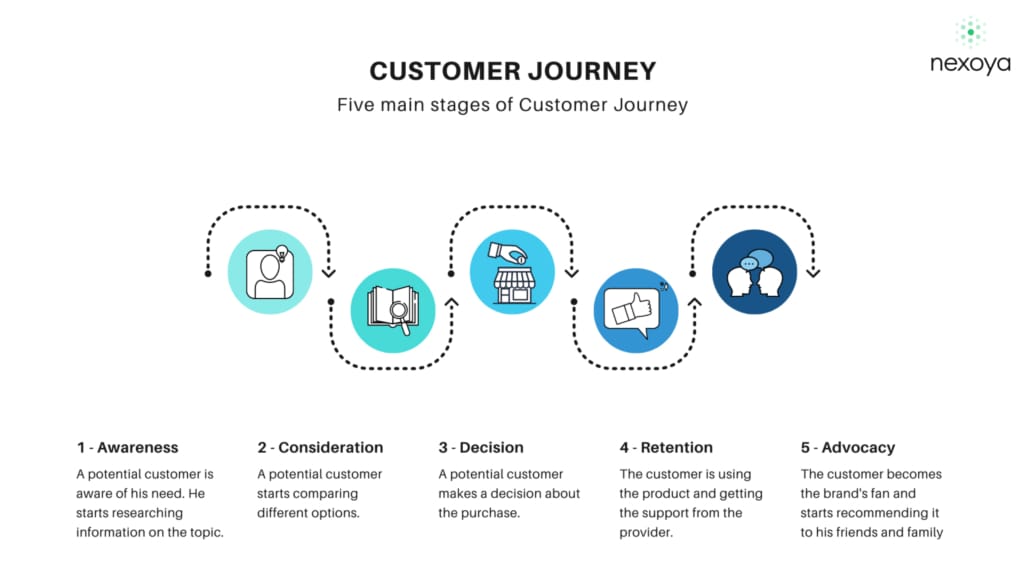
When users come across your brand, they go through the stages described above.
This is why you need to create an email sequence that won’t be too salesy but will raise awareness, establish your brand, and advocate for you in the future.
Going through all those stages in your funnel means that your prospects will go through as many decisions and perform specific actions.
An automation tool will help you create emails that feel like a natural continuation of those actions.
Map the users’ behaviors first, and decide on the appropriate trigger.
If, for example, your user has abandoned their cart, a proper cart abandonment email with a little discount or cross-selling elements should do the trick.
Segment and personalize
Segmentation and personalization are non-optional for modern ecommerce marketing.
According to Forbes, “91% of consumers say they are more likely to shop with brands that provide offers and recommendations that are relevant to them.”
Segmenting your list is crucial, especially when trying to understand what a user will react to and how.
You need to divide your subscribers into groups with similar interests that will correspond with your buyer personas first.
Make sure to use AI and machine learning tools to create a marketing message that will resonate on a one-on-one level through personalization.
These tools are able to distinguish even the smallest of patterns and, eventually, create hyper-personalized messages.
Think of it this way: An email is like knocking on a person’s door and asking to see them.
You wouldn’t open the door to a stranger, and you won’t bother with a brand that found your email address but didn’t bother to look at your specific interests.
A personalized email, of course, needs to go beyond “Hi, [First Name]”. It needs to include more information and more intriguing tidbits.
To woo your users just the right amount, you can send them sequences that could include special offers for their birthdays, a welcome email sequence that will get them familiar with your brand, or a retargeting email sequence to those that haven’t interacted with you in a while.
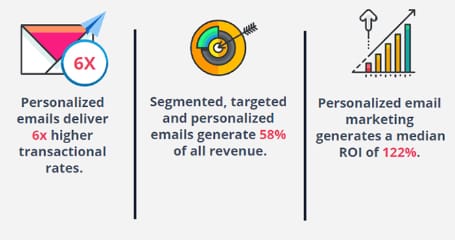
The numbers above don’t lie. When your prospects see content created for their specific interests, they will interact with it, as it feels like talking to a friend.
Super Pro Tip: Invest in an email marketing and marketing automation platform that gives you the opportunity to create dynamic content.
Dynamic content can change according to the recipient, and it’s the perfect way to hyper-personalize. Use dynamic content to sell swimsuits to Australia and scarves to the UK simultaneously.
Optimize for mobile
Much like segmentation and personalization, mobile optimization for ecommerce is non-negotiable.
Online ecommerce retailers like Asos and brands like Mango all have mobile apps designed with conversion in mind.
Creating responsive content through your emails only makes sense, as mobile opens have surpassed desktop opens in 2022.

The reason behind this is the fact that everyone leads a busy life nowadays.
But what ecommerce marketers fail to understand sometimes is how to leverage the impulsive nature of a purchase.
Using highly personalized email templates and email automation to make your sequences timely and relevant is all fine and well.
Still, there’s no use in these sequences if users can’t view your marketing message on the go.
Your emails should look pristine and work perfectly through a mobile device. So, apart from taking the time to check what they look like on every screen, make sure to create a mobile-friendly email.
- When using GIFs, make sure to fit your marketing message in the first frame. Sometimes GIFs don’t load properly, and you want your prospects to know what your offer is from the start.
- Create subject lines that are small and contain enough information to be enticing.
- Use images and videos that show properly on every device. If this is not possible, consider some workarounds, like cinemagraphs or GIFs.
- Make sure your CTAs link to a mobile-friendly dedicated landing page.
Keep in mind that a user won’t wait to open your email on their desktop computer. You need to be ready on every device.
And if you want to put their impulses to good use, you’ll need an email free of broken elements and images that don’t display properly.
Be mindful of your “From” name
This tip may seem like something minor, but your “From” address is a small tweak that can steer your ecommerce marketing in the right direction.
It looks like this:

And it can boost your conversion by creating a brand that is more human and less “robotic” when delivering marketing messages through email marketing.
Of course, using an easily recognizable team address—like “support@yourbrandsname.com” or “info@yourbrandsname.com”—seems like the official and logical thing to do.
But it’s also a bit impersonal.
On the other hand, a “name@yourbrandsname.com” format gives users the impression that users can contact a member of your team for something as simple as an address change instead of having a robotic delivery through badly executed email automation.
Another reason is that you need to make things easy for the user.
A “name@yourbrandsname.com” format gives recipients all the information they need, which works wonders for your brand’s credibility.
Think of it this way: Would you rather know who to contact when it comes to addressing an issue with your order, or go online and look for the brand’s contact details?
#cta-visual-pb#<cta-title>Built fitting landing pages for your email marketing<cta-title>Drive your leads to the right landing page every time to see your conversions rise.Start customizing for conversions
Every ecommerce store is different, and setting SMART goals is the first thing you need to do before deciding on the email marketing campaigns that will work for you.
According to Entrepreneur, SMART goals are:

While your ecommerce store’s goals may be different than that of your competitors, there are some staples when it comes to email marketing campaigns.
These staples exist to keep your audience happy and engaged through all the stages of the funnel while boosting your lead generation through various tactics.
A welcome email
A welcome email sequence is one of the most anticipated sequences of the ecommerce funnel.
It allows users to get familiar with your brand, builds your authority, and shows recipients what to expect from you.
And here’s why your brand needs them:
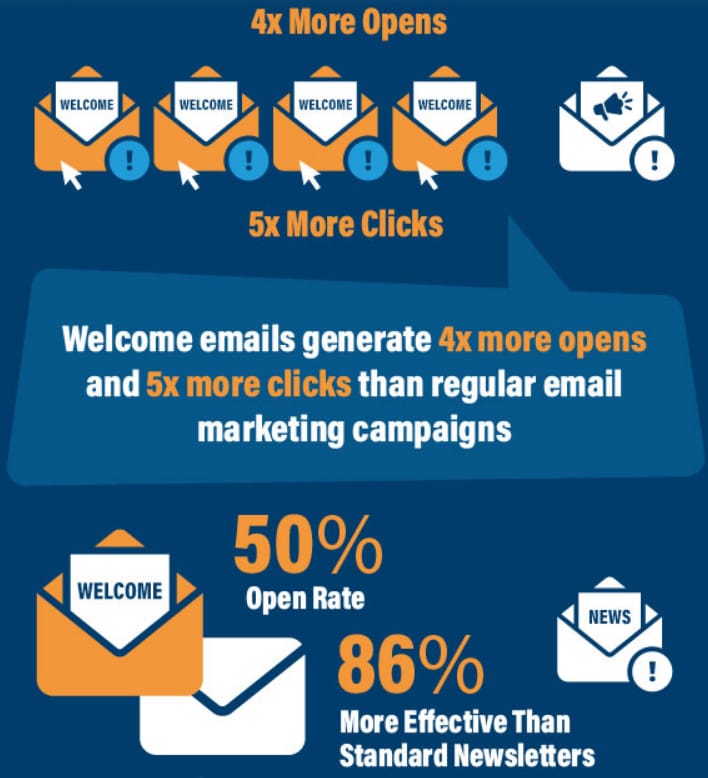
The numbers above indicate that creating a welcome email sequence with a strong onboarding aspect can boost your exposure.
Especially if you ensure it works in tandem with your social media branding efforts and showcases your brand’s unique tone through design, colors, and copy that resonates.
Check this one:

The objective here is clear. Glossier‘s email aims to welcome users and thank them for subscribing.
It also points to the brand’s mission statement and how interacting with the brand can be useful for recipients. And look how the email continues:
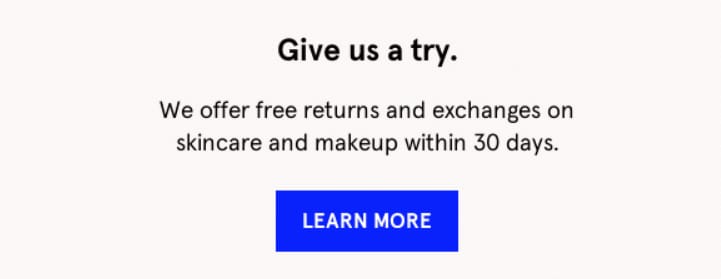
An engaged user will fully appreciate this type of commitment from a brand they’re only just experiencing.
If your budget is too tight to make the same commitment, make sure to offer a discount code or a limited-time offer. This will boost the users’ curiosity and result in better conversion.
Upselling and cross-selling emails
One of the most common ecommerce marketing mistakes is not trying to upsell and cross-sell when the user is ready to convert or ready for their second purchase.
An upsell or cross-sell is, after all, a tactic that gets better conversion by increasing a user’s Average Order Value (AOV) without raising the price point too much.
If we’re talking about upselling, the brand goes for a campaign that will urge the prospect to purchase something of greater value:
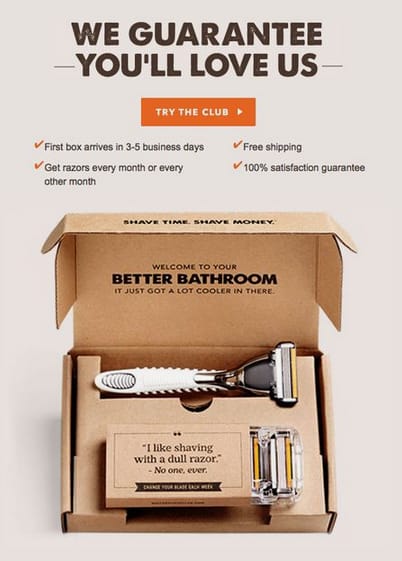
Cross-selling is the act of encouraging the user to purchase a product that works with the product in the user’s original purchase. Like so:

The great thing about upselling and cross-selling is that they don’t need to be standalone email marketing campaigns.
They can exist as parts of almost any email marketing campaign, from replenishment email marketing campaigns to product announcements.
Transactional emails
Transactional emails may be the most important emails when it comes to ecommerce stores and their revenue.
Since these emails confirm a transaction was successful, users are expecting them—not sending transactional emails can harm your credibility.
This type of email can inform users of the status of their order, the status of their payment, and even their order’s tracking code.
And since transactional emails will definitely get opened, they’re the best way to boost your revenue.
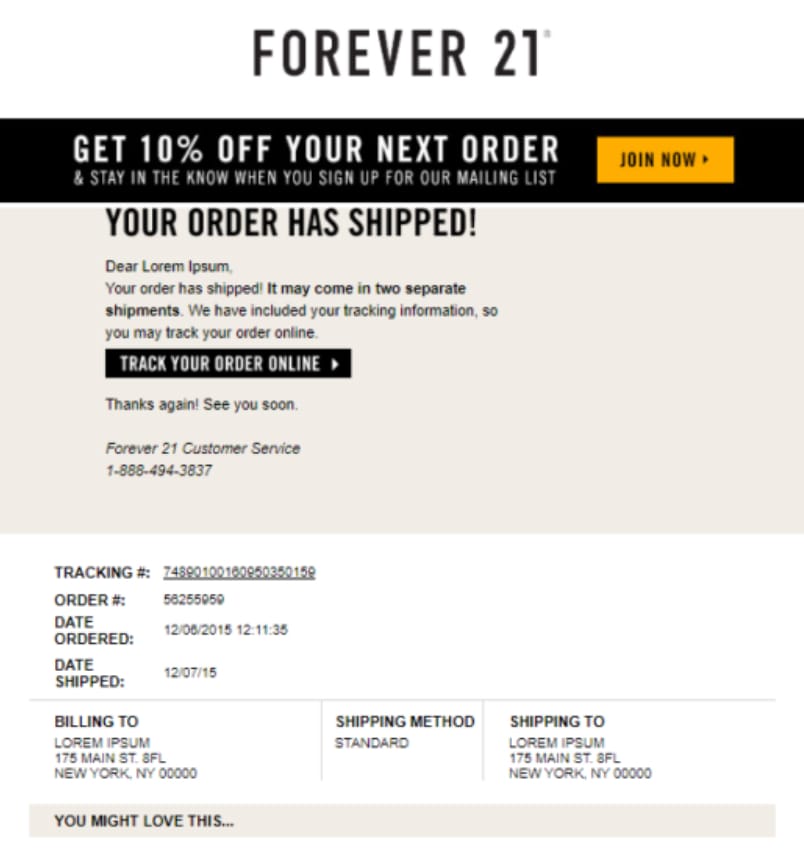
Just end your email with an additional discount for the user’s next purchase or a benefit for every referral.
Transactional emails are also one of the most important when building your brand and creating a perfect impression, especially if we’re talking about a user’s first purchase.
Re-engagement emails
Keeping users engaged and interested can boost a brand’s authority, and it makes it more recognizable to the general audience. This is why brands need retargeting campaigns.
However, a retargeting campaign is not a social media strategy alone since every brand and ecommerce store needs to prune their email list every once in a while. This is where re-engagement emails come into play.
Re-engagement emails function in two ways:
- They remind inactive users of your brand
- They give them the opportunity to unsubscribe if they want to
Keeping your list clean and pristine is not always easy, especially since it can take a lot of time to create and even more to curate.
However, for an email list to work and work properly, it’s necessary to be comprised of interested leads that will convert in terms of purchases, affiliate marketing efforts, and referrals.
Pro Tip: An email list that is not pruned and optimized could potentially be dangerous. Uninterested leads could flag your emails as spam, while undelivered messages could harm your deliverability rates.
Keeping track of your leads with re-engagement emails will help you ensure you’re reaching out to an audience that is just right for your brand.
So, let’s assume that you want to send a re-engagement email to your audience. In this case, you can send this email and make sure to retarget leads that seem to have grown “cold”:
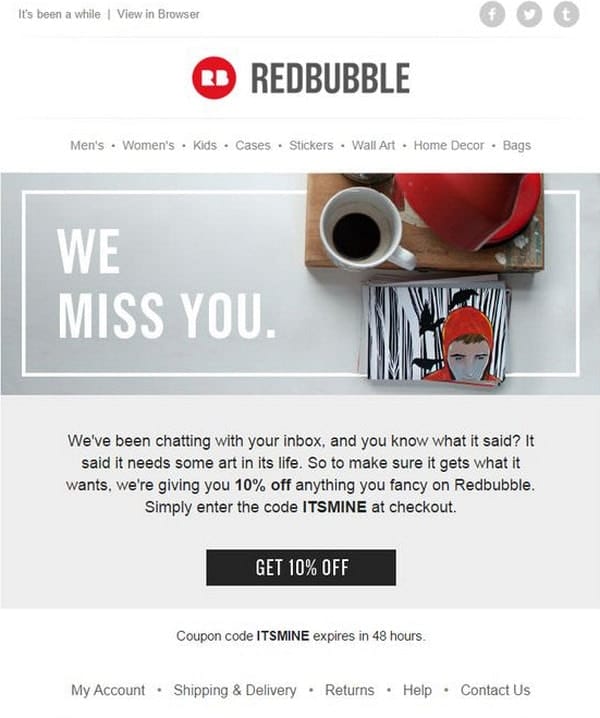
The addresses you’ll need to remove from your list will belong to users that won’t convert, non-openers, inactive users, or even users with invalid and throwaway email addresses.
No matter what the case may be, these addresses won’t interact with your brand, for better or worse.
Sending them a retargeting email that notifies them they won’t be receiving more updates from you and will be deleted from your list is the way to go.
Retargeting emails allow marketers to manage their email lists and metrics a lot better.
You see, a list that is not clean and pruned won’t show correct statistics and, in the end, won’t allow you to move forward with your ecommerce marketing plan and make informed decisions.
The takeaway
Ecommerce marketing is not something to be taken lightly.
Email marketing for ecommerce requires agility, the right tools, responsive and customizable email templates, and constant optimization and A/B testing.
Beyond these techniques and tools, ecommerce email marketing is all about creating an experience in the form of an email sequence that is personalized and relevant.
This experience is what will create an emotional response between your brand and your audience, increasing engagement, exposure, and, in the end, sales and revenue.
#cta-visual-pb#<cta-title>Customize your email marketing landing pages<cta-title>Drive your leads to the right landing page every time to see your conversions and sales rise.Start customizing today

Téa Liarokapi
Téa Liarokapi is a Senior Content Writer for Moosend, an email marketing and marketing automation platform, and an obsessive writer in general. In her free time, she tries to find new ways to stuff more books in her bookcase and content ideas (and cats) to play with.



